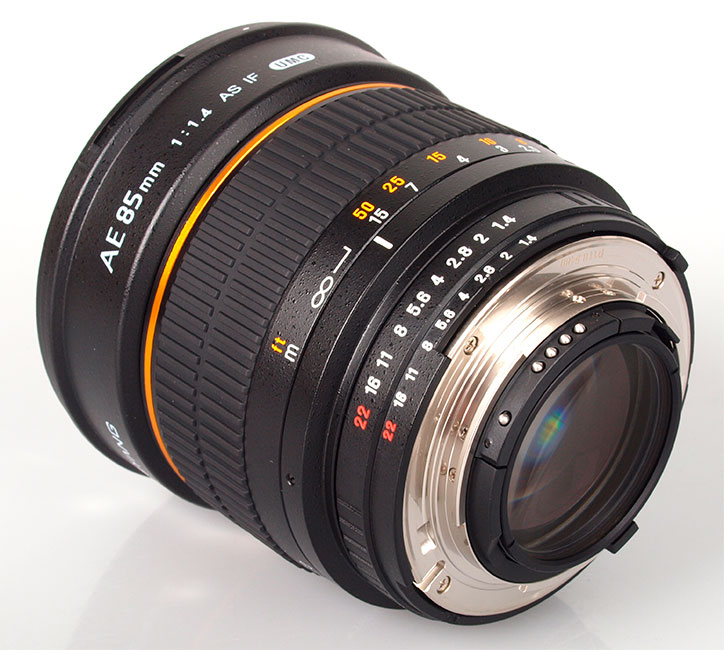Lens selection
Choosing the right camera lens
Theory
Which lens do you want to buy?
Universal zoom;
standard zoom;
prime lens;
telephoto lens;
lens for landscape photography;
lens for photographing architecture;
lens for portrait photography;
lens for macro photography.
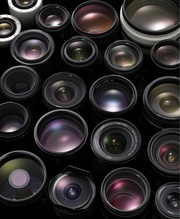
Choosing a lens is a difficult task that sooner or later faces every SLR camera owner. In some cases, the lens has a much greater impact on the quality of photographs than the camera itself. Many DSLRs come with standard lenses (sometimes they are also called “kit” lenses, from the English word “kit” - kit). These lenses give the photographer the opportunity to try his hand at shooting with a DSLR, but, as a rule, due to their imperfections, they do not reveal all the capabilities of the camera. However, we strongly recommend that anyone who owns a DSLR camera for the first time shoot with a stock lens for at least a few months to determine their shooting style and then make the right decision when purchasing more expensive optics.
But before we move on to practical advice on choosing a particular model, let's understand the lens parameters and what these parameters can affect when shooting.
Focal length
This is one of the main characteristics of the lens, which determines how much the lens “brings closer” or “farther away” the object. Focal length is measured in millimeters. In “film” times, when most DSLRs had a 24x36 mm frame format, there were no problems with focal length. But today there are DSLRs on the market with different frame formats. There are both full-frame models (24x36 mm) and cameras with a smaller matrix size. The ratio of the diagonal of the full frame and the diagonal of the camera frame with a reduced matrix is called the crop factor (from the English “crop” - crop, crop). This term appeared for a reason. The lens projects a “full-frame” image onto the matrix, but “cropped” cameras save only that part of the image that is equal to the size of the matrix. Everything else does not fit on the matrix and, therefore, is cut off. This means that lenses on cropped cameras magnify the image more than on full-frame ones.
All lens models can be divided into ultra-wide-angle, wide-angle, standard and telephoto lenses. For full-frame cameras, ultra-wide-angle lenses are lenses with focal lengths from 7-8 mm (circular fisheye) to 24 mm. 24 to 35mm are common wide-angle lenses. Standard (or normal) lenses are considered to have a focal length of 45 to 55 mm. This focal length provides the most natural perspective for the human eye. From 85 mm the moderate television range begins. Lenses with a focal length of 300 mm or more are powerful telephotos.
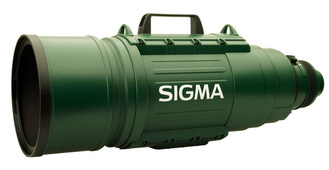
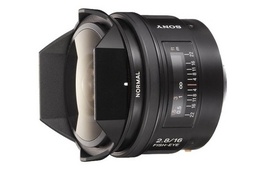
To make it easier to estimate what viewing angle a lens will provide on a camera with a reduced (relative to the full frame) sensor size, the crop factor is used. For amateur Canon DSLRs, the crop factor is 1.6; for amateur DSLRs Nikon, Sony, Pentax and Samsung - 1.5; for Olympus and Panasonic cameras - 2. By multiplying the actual focal length of the lens by this coefficient, you can get the so-called equivalent focal length. For example, at full frame a 35mm lens is a wide-angle lens, but on an APS-C camera (1.5 crop factor) it becomes a standard lens because it provides an angle of view equivalent to a 52.5mm lens on a full-frame camera.

This approach to estimating focal length is certainly imperfect. But it allows you to compare viewing angles of lenses at different frame formats and bring this information to a single standard. Concluding the story about focal length, we would like to remind you that lenses designed for SLR cameras always indicate the real, and not the equivalent, focal length.
Lens aperture
The lens aperture is usually called a value that characterizes the illumination of the matrix or film. Aperture is mainly determined by the maximum relative aperture size of the lens. For example, if a lens is marked 50/1.4, then its maximum relative aperture is f/1.4. The lower the number in the denominator, the higher the aperture ratio, and the more light such a lens allows to pass to the matrix. And if so, then shooting can be done at shorter shutter speeds. In addition, the higher the aperture, the shallower the depth of field the lens can provide, and the more it can blur an out-of-focus image.
As a rule, fast lenses are much more expensive than their slower counterparts. This is explained simply: they are of a higher class, which means they provide higher image sharpness, a lower level of aberrations and often have a better design.
Image Stabilizer
Image stabilization is a technology that mechanically compensates for angular camera movements to prevent image blur at long shutter speeds. Today, image stabilization in cameras is carried out in two ways: by compensating displacement of the matrix or a special lens in the lens. In the first case, stabilization is ensured when using almost any lens. This type of stabilization is used by Sony, Pentax and Olympus, thanks to which the lenses of these manufacturers do not require built-in stabilizers. All other companies produce, in addition to conventional ones, also stabilized lenses equipped with a correction lens displacement mechanism. Such lenses are more expensive than non-stabilized ones, but, according to many photographers, they provide more effective stabilization than cameras with a built-in stabilizer.

The principle of operation of the stabilizer based on matrix displacement
If you use a Canon, Nikon or Panasonic camera, then when buying your next lens you should decide: buy a cheaper unstabilized one or a more expensive one, but equipped with a stabilizer. If you shoot stationary objects in low light conditions, the stabilizer will significantly increase the shutter speed without blurring the image. Unfortunately, for technical reasons, not all types of lenses can be equipped with a built-in stabilizer.
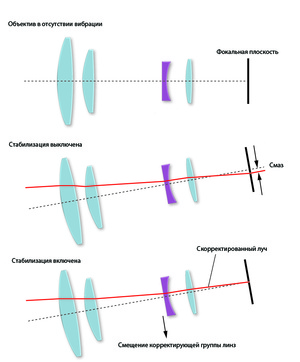
The principle of operation of the stabilizer based on the displacement of a group of lenses
Design features of lenses
Here we would like to mention several design features that, one way or another, affect the filming process. Firstly, different lenses have different autofocus drives. All modern Canon lenses have a built-in autofocus motor. Nikon, Sony and Pentax lenses can be equipped with either a built-in autofocus motor or a screwdriver-type drive, which allows you to use the motor located in the camera to focus. However, it should be remembered that, for example, not all Nikon cameras have such a motor, so with such models, “screwdriver” lenses lose the autofocus function.

Screwdriver type autofocus drive
Motors built into lenses also differ from each other. The fastest and quietest of them are ultrasonic ring motors (different manufacturers may label them differently, for example, USM, SSM, SWB, SDM). They are used in the most expensive lenses and provide virtually silent and very fast focusing. Motors of other types are built into budget models, and they may not provide any benefit over the “old” autofocus screwdriver drive.
Some budget lenses are designed in such a way that the entire front group of lenses moves and rotates during focusing. This can be inconvenient if you plan to use polarizing or gradient filters. During focusing, their position relative to the horizon will be lost due to the rotation of the filter along with the front lens. In more expensive lenses, the front lens group does not rotate.

Third Party Lenses
Of course, every camera manufacturer wants only its lenses to be used with its cameras. In addition, each manufacturer has a proprietary mount for optics - a bayonet mount. The only exception is the open 4/3 standard, which is used today by Olympus and Panasonic. Along with the main manufacturers, there are also several companies that create optics for different mounts. For example, Sigma, Tamron and Tokina. Typically, lenses from these manufacturers are cheaper. If we talk about the quality of their products, then it is better to consider each model separately, since in the lines of third-party manufacturers there are both frankly “weak” (but also cheaper than branded) models, and completely unique lenses that have no analogues from major photo brands . Despite the fact that millions of photographers use third-party optics, we must not forget that the camera manufacturer always guarantees compatibility only with its own accessories.
So, we've covered the basic characteristics of lenses, and now it's time to move on to practical advice on choosing a lens for various shooting conditions. In each paragraph of this section, we will give examples of several specific models that we would like to recommend. However, you should not think that we offer the only correct solution: there are many other models from which you can choose the most suitable one yourself.
Lens selection. 7 Key Factors

In this article, we'll answer 7 key questions you should ask yourself before buying a new lens. In addition, we will talk about the main factors that you should pay attention to when buying a lens.
The lens is a tube, either plastic or metal, with glass at each end, and the lens can hold up to 20 (or so) individual lenses, arranged in several (up to ten) groups.
Other lens elements include aperture blades and an autofocus motor. All these elements ensure correct and high-quality operation of the lens. Obviously, for the average user, the complex optical system of the lens is quite easy to use, and no special skills are required to learn how to use the lens.
The quality of your photos will depend on the lens you choose and attach to your camera, so choosing the right one is the key to future success. The main factor is the focal length. Focal length is the distance between the optical center of the lens and the sensor and is easier to visualize.
For a camera with a full-size sensor, the standard lens is 50mm. Lenses with a focal length shorter than 50mm are called wide-angle lenses, and lenses with a focal length greater than 50mm are called telephoto lenses.
Which one is right for you will depend on what you plan to photograph and the distance at which the subject will be located.
7 Questions to Answer When Buying a Lens
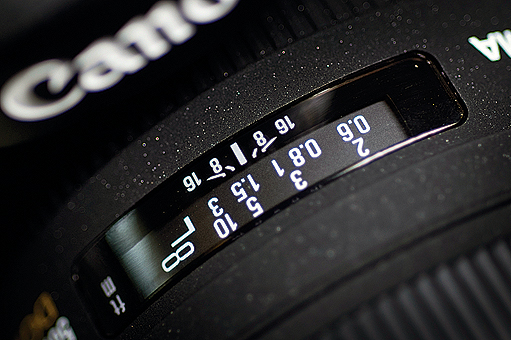
What focal length do I need?
Think about what you plan to photograph, then you can determine what focal length your lens should have. If you already have a wide-angle lens, you may need to consider purchasing a telescopic lens, and vice versa.
If your financial capabilities allow, you can choose for yourself a so-called universal lens, the focal length of which covers the range of 18-200 mm, that is, from wide-angle to telescopic.
What is the lens aperture?

A lens with a maximum aperture between f/1.2 and f/4 is often called a “bright” lens. Lenses with a wider aperture allow a lot of light to pass through, allowing for high shutter speeds. With these lenses you can take beautiful images in low light conditions.
Bright lenses are usually very high quality, but they are often bulky and expensive, so not every photographer can afford to buy such optics.
Less bright lenses are usually much cheaper and lighter, but when shooting in low light, you will need to increase the ISO setting (which subsequently results in loss of quality and noise in the image).
For example, if a lens with a maximum aperture of f/2.8 allows you to set the shutter speed to 1/125 sec. at 100 ISO, a lens with a maximum aperture of f/5.6 will allow you to set the same shutter speed at ISO 400 under the same conditions.
A wider aperture also allows for shallower depth of field, which is especially useful in portrait photography.
Image quality?
Only by using a lens can you truly know the quality of the photos it takes. Therefore, before you give preference to one or another option, read the reviews and talk to people who already work with this optics. This is the only way you can find out how clear and sharp pictures a particular lens takes, and decide for yourself whether you are satisfied with such a result.
What is the minimum focusing distance?
How close you need to get to your subject so that the lens can focus on it. This is a very important point to consider when choosing a lens, especially when choosing a telescopic lens.
Of course, a lens that can bring the subject close many times is very good, but if you cannot take a photo from a close enough distance, (for example, if you want to take a portrait) then you will have to purchase special rings that increase the physical size of the lens, thereby allowing you to shoot from a closer distance.
Does the filter ring rotate?
For relatively inexpensive lenses, the front element rotates while the lens is focused. This causes some problems if you have a polarizing filter attached. The only solution to this problem is to focus and then turn on autofocus and switch to manual focus mode.
How much do you expect?
Buying a new lens is always quite expensive. Even the most common and inexpensive lens will cost at least $100. Realistically assess your capabilities and determine the amount you will agree to spend on new optics.
A more expensive lens will generally be brighter and will allow you to photograph in low light with ease without having to raise your ISO, while cheaper lenses will be less bright at f/3.5 at wide and 5.6 at telephoto.
When working with an inexpensive, less bright lens, you will have to set the ISO value high, which means losing image quality. At the same time, with such optics you will not achieve a shallow depth of field. High quality lenses are more resistant to chromatic aberration and distortion. But remember, there is no perfect lens.
physical characteristics
The external features of the lens should also not be overlooked, because they affect the ease of working with this optics. Pay attention to the weight, texture, dimensions of the new purchase. Cheap zoom lenses can be wobbly and unstable, while more expensive ones mount securely to the camera.
What should you pay attention to when purchasing?
What are the main lens features you should pay attention to when purchasing a new lens:
- Focal length and the ability to change it;
- Lens field of view angle (part of the scene that fits into the frame);
- Aperture, that is, the ratio of the diameter of the maximum open aperture to the focal length;
- Resolution, that is, the ability of the lens to take clear pictures;
- Bayonet type and thread diameter for attaching to the camera;
- Availability of mount for filters;
- Image stabilization, whether it is in the lens or not;
- Switch between manual focusing and automatic;
- The presence or absence of a hood (an accessory necessary for protection from bright sunlight).
Lens markings explained
If you are new to photography and buying a lens for the first time, you have probably noticed a lot of strange symbols and abbreviations used in lens labeling.
This cheat sheet will help you understand the basic symbols used when marking a lens.
How to choose a lens?
A Guide to the Lens Jungle
Amateur photographers, as you know, are divided into two main categories. The first category includes those who, looking at the photograph, exclaim: “Wow! It gives me goosebumps!” True, there are also those who are not trampled by goosebumps for every reason, but photography still affects them on an emotional level. It is interesting that these people, as a rule, treat the camera either as an inevitable evil, without which it would be much better, or as a living being.
This article is intended mainly for those who take photographs by “pressing a little button.” We did everything possible to ensure that the article was interesting to readers and easy to understand. In it you will find information on where the depth of field scale is located, how to distinguish an exposure bracket from a zoom lens, and much more.
Representatives of the second category in photographic images are interested in slightly different things: what lens was used to shoot, what aperture, or, even worse, what is the resolution and manufacturing technology of the matrix. Without going into a discussion about who is more right, we state that for a real understanding of photography, it is necessary, although not sufficient, to have both a sensory (goosebumps) and an intellectual-analytical (knowledge and skills) attitude towards it.
This article is intended mainly for those who take photographs by “pressing a little button.” True, in order to maintain universal balance, we tried to do everything possible to make it interesting both to readers who know where the depth of field scale is located, and even to very sophisticated photographers who are able to distinguish an exposure bracket from a zoom lens.
Focuses and distances
First of all, let's define the terminology.
The camera consists of two parts - an optical system called the lens, and a light-proof box into which light enters through the lens. Cameras are divided into point-and-shoot cameras, DSLRs and rangefinders. Point-and-shoot cameras, even digital and the most advanced ones, differ from other types in that the lens can only be separated using brute force. DSLRs or, in adult terms, single-lens reflex cameras and rangefinders - devices with focusing by combining two images, provide the possibility of using interchangeable lenses.
A reader who has not yet become proficient in photographic tricks, but who is inquisitive, will probably have a question: why, in fact, use these same interchangeable lenses? And in general, what kind of lenses are these if they need to be changed from time to time? Calm down, we'll sort it out now.
A lens is an optical device that creates a miniature image of what is in front of it on a flat surface. Devices, as we know, have all sorts of properties and characteristics, and lenses in this sense are no exception. The main properties of a lens are focal length, aberrations (distortions) and maximum aperture ratio. We'll deal with aberrations in another article, in another issue, and about aperture - definitely here, but a little later.
Focal length (FL) determines the scale of the projected image (the ratio of the linear dimensions of the image to the real object). In the case of a thin lens, the FR is equal to the distance from the center of the lens to the intersection point (behind the lens) of parallel (in front of the lens) rays. Most lenses, with the exception of the so-called monocles, consist of several elements, and in them the FR is much more difficult to calculate. From a practical point of view, it is important to know that the larger the DF, the stronger the lens “zooms in”. Lenses with a large DF or, as they say, with a long focus are called telephoto lenses, or telephotos. They are usually used to photograph distant objects. The viewing angle also depends on the focal length, and for most lenses the dependence is inversely proportional. Lenses with a small DF are called wide-angle. You can imagine how short-focus optics works by remembering the picture in an ordinary door peephole.
The question arises: since there are long- and short-focus lenses, does that mean there must be something between them? How do you understand at what focal length a lens becomes a telephoto and at what focal length a wide-angle?
It is intuitively clear that with a certain DF the image will look “normal”, that is, not close and not far away. Such a lens is called normal, and its focal length can be determined using more than just a sixth sense. It turns out that the FR of an ideal normal lens is equal to the diagonal of the frame. For the world's most common film format with a frame size of 24x36 mm, the normal focal length is approximately 43 mm. With the help of Oskar Barnack, the inventor of the Leica narrow film camera, the focal length of a normal lens is rounded to 50 mm. This was dictated by practical considerations: at the beginning of the last century, they did not yet know how to make short-focus lenses with an image sharp enough for printing through an enlarger. For so-called medium format with a 60x60mm square frame, the normal focal length is approximately 80mm. In digital photography, with rare exceptions, the frame size is smaller than 24x36 mm and the corresponding focal length is determined using the so-called crop factor - the ratio of the diagonal of a standard frame to the diagonal of the digital sensor. Read about this in the article about matrices.
Let's summarize what has been said. So, taking the 35mm frame as the standard, all lenses with a focal length from zero to 50 mm can be considered wide-angle, and from 50 mm to infinity - long-angle. Photographic optics can be divided by area of application as follows:
Selecting a lens in an online store
Choosing a lens, especially in an online store, is not an easy task, but it is quite doable. What it requires from the buyer is, first of all, a good knowledge of the brands and designations of the products being manufactured. Armed with knowledge, you can easily find the specimen you are interested in. Lens markings usually consist of mount, focal length and aperture ratio.
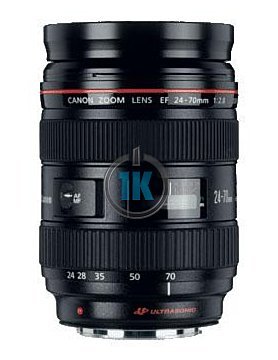
Canon EF 24-70 f/2.8L USM
Canon EF is a mount model.
24-70 is the minimum and maximum focal length
f/2.8L - lens aperture
Most likely, you are looking for a lens for a camera you have already purchased and the first thing you look at will be the so-called Bayonet mount.
Bayonet. The lens can be attached to the camera body using a bayonet or thread. The threaded type of connection between the body and the lens has its advantages and disadvantages over its rival, the bayonet mount. The main disadvantage of threads and, accordingly, the advantage of butt joints is the speed of assembly and readiness for work. A butt (groove) connection is much more convenient in this regard. You just need to insert the lens pins into the grooves and turn them a little. The lens is securely attached. Another disadvantage of the thread is that when the thread wears out, microchips are formed, which clog the insides of the camera and can ruin the picture by getting on the lens glass. On the other hand, the thread is more resistant to the hardships of life and is not as susceptible to shocks and loads as the bayonet pins. There is something to think about.
The struggle for the market has resulted in the fact that almost every manufacturer has released its own mount, and lenses from one brand may not fit the body of another. The difference is in the number of studs, the location of the grooves, the diameter of the window, etc. provides complete incompatibility. Canon cameras use Canon EF and Canon EF-S lenses. These same lenses fit some Kodak models. Hasselblad - Hasselblad
Leica - Leica and some Epson,
Minolta A -Sony Alpha, Minolta
Nikon F - Nikon, Fujifilm, Kodak
Sigma SA - Sigma
Pentax KA/KAF/KAF2 - Pentax
Olympus - Ziko Digital (format)4/3
Focal length.
The focal length largely determines the scope of use of the lens. Its size determines how wide or narrow the viewing angle will be.
Conventionally, according to focal length, lenses are divided into: fisheye, wide-angle, standard and telephoto lenses. And in addition, there are lenses with both variable and fixed focal lengths.
Discrete lenses have a fixed focal length. Their disadvantage is that if you want to change the viewing angle, you will have to change the lens. The use of such lenses is indicated by their greater aperture ratio than that of transfactors.
Transfactor lenses - such lenses are easier to buy than discrete ones. In terms of quality and aperture ratio, transfactor models are often inferior to discrete ones, but in terms of convenience of price and use they are definitely ahead. It's much easier to turn the ring than to change lenses. And one transfactor, whatever one may say, will be cheaper than 2 or 3 discrete ones.
"Fish eye"
Lenses belonging to this type are characterized by an ultra-short focal length. About 10 mm. This distance makes it possible to shoot at an angle of almost 180 degrees. This is what it looks like - a super wide-angle fisheye. What to shoot with such a lens? Well, certainly not the flight of a lone hawk. But you can try a flock of Flamingos. Take 2 photos and your almost 360 degree panorama is ready. Moreover, 360 not only horizontally, but also vertically. These lenses are great for shooting landscapes, buildings, and large panoramic shots.
Wide angle.
Focal length approximately 15-40
The scope of application is the same as that of a fisheye. Only the way these lenses look at the world is somehow more humane. You still can’t shoot wide-angle portraits, and you can’t shoot a flock of Flamingos in two “clicks.” Here are landscapes and large objects, be it mountains, buildings or flooded alpine meadows - this is the right topic for the wave. Both of these lenses are not designed for detailed photography. They were born for shooting on a grand scale, and an attempt to shoot something portrait-like with a camera with such a lens will lead to distortion of the model and a poor-quality frame.
Standard.
Focal length 40 - (60)70 mm.
The thing is almost universal. Ideal for everyday photography if there is no need to shoot objects in detail, at a great distance or capture large objects. A camera sold together with a lens is usually equipped with just such a model.
Telephoto lens.
Focal length from 70 mm and more (200, 300, 500.)
With a minimum focal length, ideal for portrait photography. At maximum distance - for detailed shooting of distant objects.
Having such a lens, you can forget about wide panoramas and start hunting for separately flying hawks, license plates, and the intimate lives of your neighbors in the house whose windows are located opposite yours.
In fact, it is quite difficult to find a lens that fits into some specific parameters, unless of course it is discrete. Most transfactors are universal. If they fall into one category, they are sure to, at least marginally, touch another.
Aperture.
The parameter according to which you will set the shutter speed and aperture value. The larger the lens aperture, the shorter the shutter speed required, and the brighter pictures you can take. Again, you don’t always have to shoot during the day in bright sunshine. When there is plenty of sunlight, lens aperture becomes less important. But as soon as evening comes or the shooting location goes under the roof, this is where it shows itself. In addition, the faster the lens you choose, the more light, under equal conditions, the autofocus sensor receives and the faster and more accurately it can work.
Keep in mind that aperture is a constant value and cannot be changed.
AF - Automatic focus.
Not required, but very convenient feature. Its essence lies in the fact that if the camera is equipped with an auto-focus function, then the photographer is freed from the need to sharpen the camera himself.
Automatic focusing simplifies the shooting process, saving precious seconds, which is very critical if you need to take several shots one after another. It helps if the photographer himself has a visual impairment. If necessary, AF can be disabled. In cases where unusual sharpness is needed, not in the center of the frame, this can be useful. Some cameras from particularly inventive manufacturers “know how” to focus the image not only in the center of the frame, but also at other points (spot focusing).
Ultrasonic motor.
As an addition to automatic focusing. If the lens has an auto-focus function, then it contains a motor that rotates according to a signal from the camera. This motor can be ordinary and produce some noise, or it can be silent - ultrasonic. In cases where you cannot give away your presence, and you even try to breathe every once in a while, the buzzing of the lens can nullify all your efforts.
Macro mode
Macro photography is photographing objects so that on the slide their size is not inferior to the original or is slightly smaller. Macro photography is not possible with every lens. For example, a fisheye capable of macro photography is more of an engineering marvel than a generally accepted norm. The wide viewing angle does not give the fisheye sufficient focusing capabilities at such a short distance. But telephoto lenses can easily afford macro photography, however, only if they have the function of the same name and with some inconveniences. The macro function makes it possible to focus the sharpness of a telephoto lens at half the distance it should be. For comparison:
Macro lens - Olympus 35mm f/3.5 MACRO 1:1 - sharpness focuses starting at 14.6 mm.
Telephoto lens - Sigma AF 70-300mm f/4-5.6 APO MACRO DG CANON EF - Minimum focusing distance 1500 mm. In macro mode - 950 mm.
Image stabilization.
With a long shutter speed or a large zoom, the normal shaking of the photographer’s hands does not allow taking a sharp and clear frame. In this case, a tripod and a remote control can come to the rescue. However, this takes time and reduces the photographer’s mobility, which is very inconvenient for fast, for example, reportage shooting. The image stabilization function makes the task of taking sharp shots somewhat easier and, in part, can replace a tripod.
Stabilization can be done mechanically or by software. In the case of lens stabilization, it is mechanical. A special sensor detects the smallest movements of the angular axis. Using an electronic stabilization system, the optical part of the lens can move along the horizontal and vertical axes. As a result, the constructed exposure is projected onto the photocell at the same angle.
If possible, hold it in your hands.
The most important points of choice are described above. This is the knowledge that will help you understand what you see in front of you. However, behind the scenes there are many indescribable nuances and rarely seen details.
When choosing a lens, of course, it is better to hold it in your hands and attach it to the camera. Try how the design lies in your hands and how it fits into the case. Check to see if there are any specks or stains inside the glass unit. Pay attention to how freely and smoothly the rings move, do they stick or creak? Inspect the condition of the front lens. If possible, take several different pictures in different modes and conditions and look at how they turned out (spots, color). If you buy a colorless filter along with the lens, this will benefit you and help keep the front lens intact much longer, because it is influenced by external factors. Throwing away a spoiled filter is much better than throwing the lens in the trash.
Don't forget: photography is a creative process, where each photographer himself chooses the nuances of his creation. It is not the camera that takes the pictures, but the person holding it.
What do you need to know when choosing a lens for a DSLR camera?
Hello photographers! I’m in touch with you, Timur Mustaev. Each of us has faced the question of how to choose a lens for a SLR camera, be it optics for the very first camera or already moving to a new level.
With the growth of professionalism and the emergence of serious customers, more advanced technology will inevitably be required. Just like buying a camera, purchasing a lens can be a daunting task. In order not to waste money, you need to have an idea of the types of lenses and their characteristics.
Practical recommendations for choosing
In order to choose the right optics, it is worth understanding what options are available and what properties distinguish this or that photographic product. So, when buying optics, look at:
- Company manufacturer .
You cannot trust dubious organizations; choose proven and reliable models, for example, from Canon or Nikon. The line of cameras is very famous, offering both cameras and accessories for them. In terms of quality and price, Kenon and Nikon are approximately similar. It is believed that Nikon has a smaller selection of lenses, but at the moment the company is developing and expanding its range.
I would put Sony and Pentax in third place in terms of trust. Unlike previous ones, this brand does not have a specific specialization in SLR devices. Whether this is good or bad is up to you to judge, because along with expensive photographic equipment, it also offers customers ordinary point-and-shoot cameras, including mirrorless cameras. Trusted manufacturers also include Tamron, Sigma, Tokona, Samyang and others. I have a Tamron 28-75 mm F/2.8. Very fast, high quality and reliable. - Aperture (F) is one of the most important indicators that determine lens quality and cost.
The ability of the lens to transmit a bright, well-lit image to the camera matrix (film) depends on its value. The high aperture allows you to shoot even in darker times of the day, without requiring an increase in light sensitivity (ISO) and, therefore, creating a picture without noise.
Let me give you a specific example. Let's say you have a Canon 700D DSLR camera or its early models 650D, 550D. And you are a lover of portrait photography. Then Canon EF 85 mm F/1.8 USM, Samyang 85 mm F/1.4 AS IF are at your service - high-aperture lenses. Not only will they create an excellent image even in conditions where flash is indispensable, but they will also beautifully blur the background in the frame, leaving only the model in focus. Be prepared to pay a hefty sum for such optics. They have always been more expensive than zooms, but now the prices of some are comparable to a good camera. - The focal length (in mm) determines the types of lenses; more about this below.
- Stabilization . It’s practically impossible to do without noise reduction, and such a function is not always available inside the camera itself; it is often on the lens. Therefore, if you are going to choose optics, then give priority only to the possibility of stabilization, which will compensate for minor camera shake in the photo. When choosing optics, pay attention to its description: the icon for Nikon is VR (Vibration Reduction) and for Canon – IS (Image Stabilization). The button is conveniently located on the side of the lens. It is supposed to be turned off when using a tripod.

When choosing a lens, if you are not using a full-frame camera, then do not forget about the crop factor, which affects the focal length.
Lens options
Choosing a lens for a well-known brand of camera is not difficult - there are enough of them to find the right one. Prices, of course, vary, and the better the quality of the optics, the more expensive. The price also includes a branding fee. In addition to differences in the company, lenses come in different types, depending on their purpose. According to the focal length criterion, they are divided into:
- Regular ones . This is a variant of a normal lens, very common, especially in portrait photography. Its focal length of approximately 50 mm (or 40-60) gives an image close to the usual human visual perception of the world around us. Distortion is minimal.
- Long-focus . From 60 to 300 mm. Thanks to this characteristic, you can shoot distant objects, however, the viewing angle will be quite narrow, that is, it will not be possible to cover the entire picture. The lenses perfectly convey the proportions of objects, the downside is the lack of versatility and depth, objects seem to overlap each other.
- Super long focal length . They are also called televisions. Focal length more than 300 mm. They are ideal for reporting and sports photography. The disadvantage of all ultra-long focus optics is their scale, that is, their large physical size and therefore inconvenience to carry, as well as the high likelihood of blurriness in the photo due to vibration problems.
- Wide-angle : maximum viewing angle, good scale, so people like to shoot landscapes with them.
But the shape of objects suffers greatly when photographing. Frequent image distortion manifests itself in curved lines in the photograph, which in fact should be straight.
Wide-angle : from 24 mm to 35 mm;
Moderate wide-angles have a distance of less than 21mm;
Ultra wide angle less than 14mm. Fisheye - 8 mm and a viewing angle of more than 180 degrees.

In addition to these species with a given focal indicator (fixed focus), there are those for which this distance can vary.
Zoom lenses are often called universal, and it's clear why: you can capture both distant objects and wide landscape coverage.
This is very useful for reporting, when you want to photograph both a close-up and a general plan, and situations when the characters are actively moving. For example, when choosing a lens for a Canon 1100d, you can find the Canon EF-S 55-250 mm, F/4.0-5.6 option; 70-200 mm F/4L USM, etc. The ones listed are classified as zoom lenses and include the ability to shoot a portrait of a person nearby and distant views.
Such optics are good not only for beginners, but also for professionals, because they give freedom for experimentation. I took exactly these optics for my first camera, Nikon D3100, and was quite pleased with it: my 18-105 mm lens was both wide-angle and long-focus.

If you want to learn in more detail about lenses, the basics of photography, correct exposure, setting up an SLR camera and much more, then the “My First SLR” course will help you. A very clear and high-quality video course with many practical examples.
My first SLR is for CANON SLR enthusiasts.

Digital SLR for beginners 2.0 - for adherents of the NIKON SLR camera.

On that note, I say goodbye, bye! Don't miss new articles, and for this, regularly visit my blog and subscribe. Share with friends and comment. Good luck in all your endeavors!
6 Best Lenses for Canon Cameras
You have an excellent opportunity to get acquainted with the rating of the best lenses for Canon cameras. This brand is the undisputed leader in the production of SLR cameras, due to its high quality and large number of service centers. The company produces a huge range of lenses for professionals and amateurs, and third-party manufacturers are also ready to help photographers take great pictures. We invite you to study the rating created based on reviews from real consumers and make an unmistakable choice.

Which brand of photo lens for Canon should I choose?
Around the world, almost 200 thousand people work for this company, and it was the company that was the first to offer customers a digital SLR camera for less than $1,000. The task of two Japanese engineers who opened an optics laboratory in 1933 was simple. They decided to create a camera that is not inferior to Leicas and Zeiss.
In the 21st century, this goal has been fully achieved. The company's flagship models are examples of scientific achievements; their technologies allow you to create amazing photographs.
The Sigma Scientific Institute was founded in 1961. Japanese engineer Michihiro Yamaki, the founder of the company, built the first plant 9 years later. Another 6 years later he opened his first foreign representative office. A relatively small company produces photographic equipment for a variety of purposes. Flashes, tripods, protective filters and many other products, but special attention is paid to lenses.
Therefore, it is not surprising that Sigma products are included in the ranking of the best lenses for Canon.
Korean Samyang Optics Company Limited is the youngest manufacturer of photographic accessories; it was founded in 1972. Specializing in photographic equipment, she was able to move the giants and take her place in the market thanks to her own developments. By designing photographic lenses for mounts from other companies, Samyang has given customers excellent equipment.
The best amateur lenses for Canon cameras
The main criterion by which amateur equipment can be distinguished from professional equipment is price. But a more affordable price for a product does not mean a decrease in quality. Equipment for professionals can withstand heavy loads, but amateur photographers don’t want to overpay for a metal case or bayonet mount.
Another difference is ergonomics. A professional takes several thousand shots a day, every second is important to him. And for leisurely shooting, models with manual focus are perfect, as they give an excellent picture.
Excellent Samyang 85mm f/1.4 AS for leisurely shooting
Samyang products often top customer reviews due to their excellent image quality. The 85/1.4 lens will help you take a portrait, blur the background, and do an excellent job with other tasks. The low price is explained by the lack of an autofocus motor, but the metal body and real glass lenses give a feeling of confidence and reliability.
The list of advantages of this lens is very extensive:
- 1.4 aperture allows you to work in low-light areas;
- Possibility of use on full-format cameras;
- excellent color rendition;
- high sharpness at open aperture;
- no chromatic aberrations at f2 and higher;
- smooth bokeh.
There is only one drawback:
- Manual focusing will be a problem for people with low vision; others note that it will quickly get used to this feature.
For those who want to take pictures of high artistic value without making a hole in the family budget, reviews call the Samyang 851.4 an excellent option.
Best lens for landscape photography Sigma AF 10-20mm f/3.5 EX DC HSM
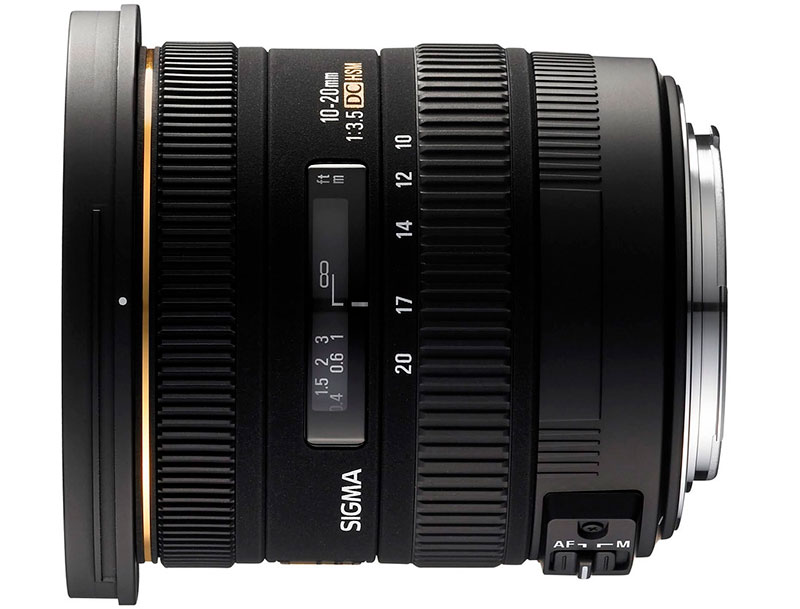
Landscape lenses have special requirements. A large aperture is not needed here, since a good landscape requires a closed aperture and the use of a tripod. A mandatory requirement is good sharpness and color rendition.
Help to make Sigma 10-20 the best landscape glass:
- good autofocus, which allows you not to miss when focusing;
- 2x zoom, allowing you to select the desired scene;
- four aspherical and two low lens lenses;
- maximum viewing angle of 83.4 degrees.
The complex optical design has led to the fact that Sigma has several negative aspects:
- heavy weight;
- significant radius of the front lens;
- low aperture;
- geometric distortions in the corners of the frame.
Judging by the reviews, buyers are willing to put up with these shortcomings. The relatively affordable price and good image quality are worth the extra effort to eliminate them in a graphics editor.
Best inexpensive Canon EF 50mm f/1.8
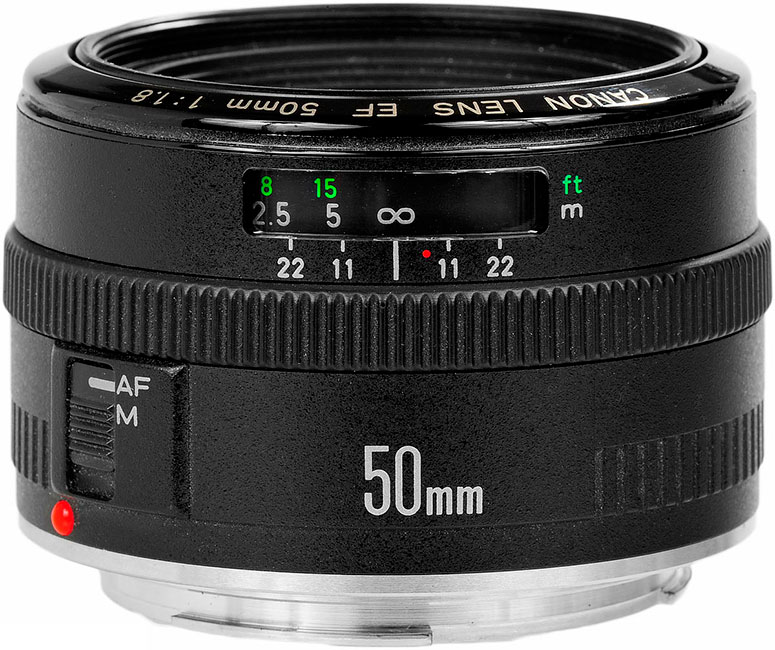
One of the most controversial lenses that Canon produces. It was he who allowed thousands of beginners to appreciate the capabilities of high-aperture glass. Although the manufacturer saved on everything possible, it made one of the most popular photographic lenses.
Its advantages are rightly called:
- low weight;
- Can be used with all Canon SLR cameras;
- aperture;
- fast automatic focusing;
- switching to manual and automatic mode;
- excellent color reproduction and sharpness;
- good background blur.
Inexpensive glass also has its disadvantages:
- the focus is not always on target;
- fragile plastic construction;
- Lenses are made of plastic, which is easy to scratch.
On the Internet, it was the Canon 50/1.8 that collected the maximum number of reviews. The affordable price allows every amateur photographer to take excellent portraits and landscapes, blur the background and shoot in low light.
The best lenses for professionals
Those who spend a significant part of their lives with a camera place increased demands on technology. Reliability and speed of operation, combined with the best ergonomics, allow you to work at weddings, special events and photo studios for many hours in a row, achieving excellent results.
Permanent leader of the professional rating Canon EF 24-70mm f/2.8L
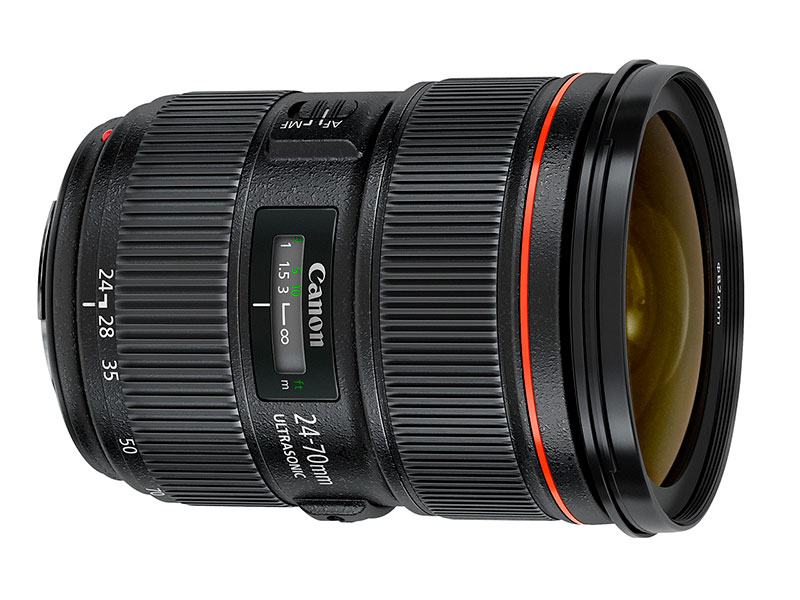
If a Canon lens has the letter “L” engraved on it, it means the company took special care in its manufacture. This marks technology for active use, with increased resolution.
A wide range of focal lengths 24-70 makes it possible to solve most photographic tasks, from shooting landscapes and genre reports to portrait photography.
Reviews include the following points as the undoubted advantages of 24-70:
- reliability;
- all-weather;
- stable photo quality;
- instant autofocus;
- absence of distortions and aberrations;
- good color rendition.
This mechanism, impeccable in all respects, has only one drawback:
- heavy weight, reaching up to 950 g.
Judging by the reviews of those who use the Canon 24-70 in their work, it completely earns every penny, its price is fully justified by the quality of the resulting image.
Best Zoom Telephoto Lens Canon EF 70-200mm f/2.8L IS II USM
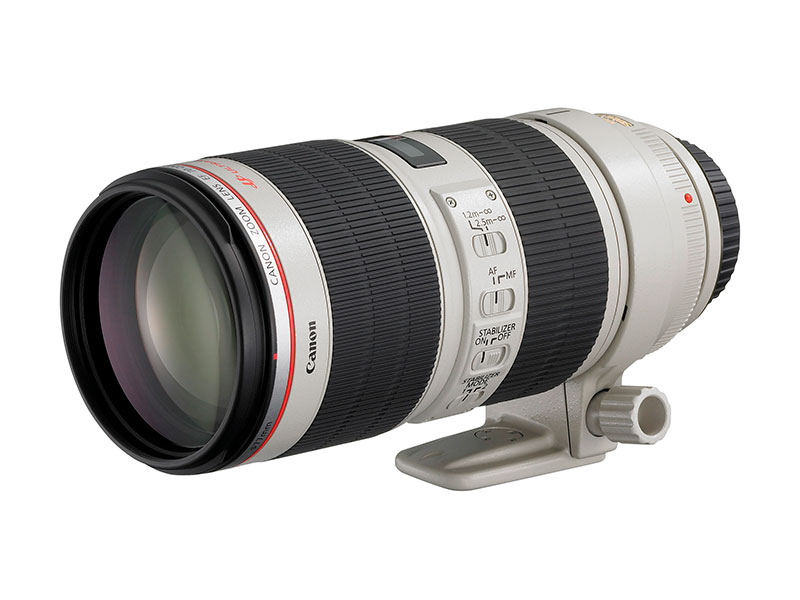
Often two lenses, 24-70 and 70-200, come in one package. At events, the photographer uses two cameras at once, which allows him to cover the entire range of focal lengths. The telephoto lens, like its shorter counterpart, allows you to cope with the most complex tasks with ease and ease.
They help him with this:
- ultrasonic motor;
- tenacious accurate autofocus;
- modern stabilization system;
- constant aperture;
- metal waterproof case;
- five low variance items;
- sharpness with open aperture;
- hood, case and tripod foot included.
There are also negative sides to all these advantages:
- heavy weight at 1450 g;
- There are several comments about the noisy operation of the stabilizer, but it is difficult to call them widespread, and this is most likely a subjective opinion.
Pros describe the Canon 70-200mm as super glass that produces stunning images on the sensor.
Best professional portrait camera Canon EF 135mm f/2L USM
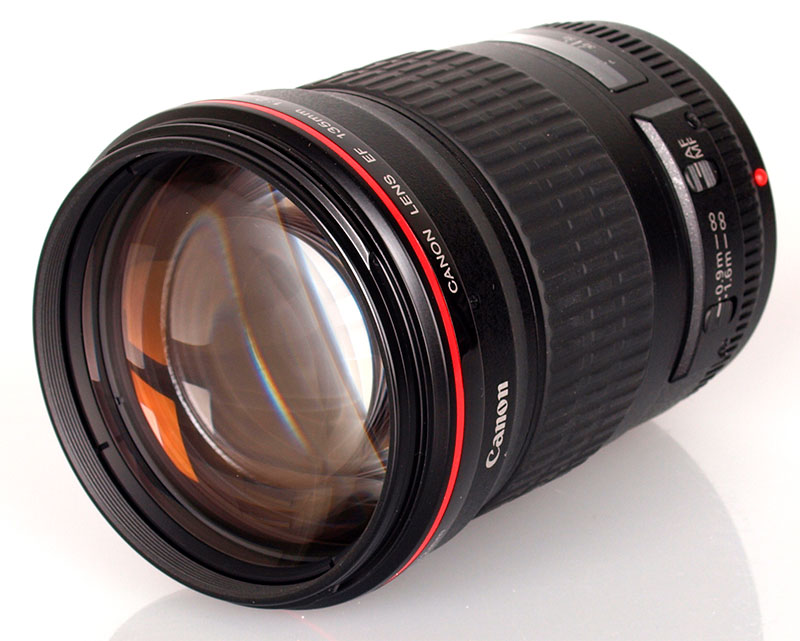
There are glasses that are designed to solve a narrow list of tasks. The Canon 135mm is one of these. It is difficult for them to shoot a reportage, it is impossible to make a good landscape, but as a portrait glass it has no equal. Fixed lenses do not require as many elements as zooms, so designers have the opportunity to reveal all the advantages of optics. It seems that there were no obstacles to the photons of light between the subject and the camera sensor.
Among the advantages of portraiture are noted:
- two low-dispersity elements;
- rounded diaphragm with seven blades;
- reliable metal case;
- razor sharpness;
- impeccable build quality;
- natural rendering of colors;
- reliable autofocus.
The price for excellence is:
- heavy weight;
- fixed focal length.
Reviews speak of the Canon 135 as an excellent portrait lens that can be used as a “mid-range” telephoto with a unique design.
Which lens for a Canon camera should I buy?
1. When shooting leisurely, you can get great shots with the Samyang 85mm f/1.4.
2. The inexpensive Sigma AF 10-20mm f/3.5 will help you create a beautiful landscape and street session.
3. Canon EF 50mm will be a good first fast lens.
4. Professional glass Canon EF 24-70 L will be indispensable for reporting and dynamic scenes.
5. The short telezoom Canon EF 70-200mm f/2.8L will become a universal working tool for a professional photographer.
6. Frames taken with the Canon EF 135mm f/2L have artistic value even without processing in graphic editors.
Friends will also be interested in this
Do you want to receive up-to-date ratings and selection tips? Subscribe to our Telegram.
How to choose a lens for a camera

Professional photographers know how important it is to choose the right lens for their camera. Because the lens is the most important part of the camera, and can also be several times more expensive than the cost of the device itself.
First of all, you must understand that an ideal lens does not exist in nature. Some people like one thing, others another. Some people like to photograph landscapes, others portraits. You need to decide on your priorities. And then, based on the reviews and experiences of other people, find the ideal option for yourself.
Lenses can be divided by type:
- standard zoom;
- universal zoom;
- prime lens;
- telephoto lens (telephoto);
Also, all lenses can be divided into groups according to purpose:
- lenses for landscape photography;
- lenses for photographing architecture;
- portrait painters;
- lenses for astrophotography;
- lenses for macro photography.
Why are different lenses needed? Why can't you just use one?
A lens is a rather complex optical system, which consists of a frame and lenses that are placed in it. The frame itself is darkened on the outside and inside, and there is a diaphragm between the lenses in the frame. Light beams pass through the optical system and hit the matrix, which converts it into an image. The lens is necessary for shooting large-format photographs; the larger the diameter of the lens, the greater the viewing angle will be without loss of shooting quality.

Different detachable lenses are used for different purposes. What can be removed with the help of one, cannot be removed with the help of the other.
Usually, beginning amateur photographers buy a camera with a kit lens. This is a budget universal lens that photographic equipment manufacturers supply their cameras with. At the initial stage, this lens will fully satisfy all the needs of its owners, but then many begin to realize that it is not enough for them. The quality of kit lenses is not the best and the pictures are obtained accordingly. Therefore, experienced photographers always buy a new camera only in the body package, that is, a camera without a lens. And lenses are already selected in accordance with their preferences.
Main characteristics of the lens:
Focal length
Focal length is measured in millimeters. This parameter is responsible for the viewing angle of the lens. For zoom lenses, the focal length can be changed, but for fixed lenses it remains unchanged. On the one hand, it is convenient to zoom in and out of an object, but on the other hand, such lenses lose quality. This means that the zoom is more convenient, and the prime is of better quality.
Permission
The most optimal resolution for a lens is the range from 1 to 2 to 1 to 4. Determining the resolution of a lens is very simple. On the front of the frame, where the first lens is located, there are numbers, which indicate the resolution of the lens.
Aperture
This value is responsible for the amount of light falling on the matrix during shooting. On the lens this value is indicated by one or two numbers (1.8, 2, 2.8). The lower the number, the greater the aperture. The higher the aperture, the less time it takes to take a frame. With this lens you can shoot at faster shutter speeds, which has a positive effect on the quality of handheld shots. Fast lenses blur the background well. They cost more than usual.

Number of lenses
The most optimal number of lenses can be considered 3-4 pieces. If there are too many lenses, this affects the transition of colors, color noise occurs inside the device, and this leads to a decrease in image quality.
Image stabilization
The stabilizer smoothes out shaking during shooting, thereby preventing blurring of the frame at longer shutter speeds. Some cameras have their own built-in stabilizer.
Lens mount
- The threaded mount is a rather outdated system for connecting the camera and lens. When making a threaded connection, you need to accurately fit into the grooves of the camera and mechanically turn it several times until it clicks. This is a very long and problematic task, during which it is very easy to damage the device itself or the lenses in the lens. Threaded mounts were used in old Soviet and foreign lenses.
- The bayonet mount is more modern compared to the threaded one. The mechanism of this type of fastening is very simple. The points on the lens and camera are aligned and the lens is rotated clockwise. This type of mount is used in most modern objects for Nikon, Canon, Sony and others. It is very simple and convenient. The only downside is the price of such lenses.

Third Party Lenses
All photographic equipment manufacturers want only their original lenses to be used with their cameras. Therefore, each brand has its own unique mount. Take this factor into account when choosing a lens, but remember that there is a way out. To attach a “foreign” lens to the camera, you can use special adapters. They even exist for older lenses with mechanical threads.
Summarize
- Decide what you want to shoot most.
- Decide on a budget.
- If you already have a kit lens, then take a closer look at some prime lens. For relatively little money you can buy a very high quality lens.

